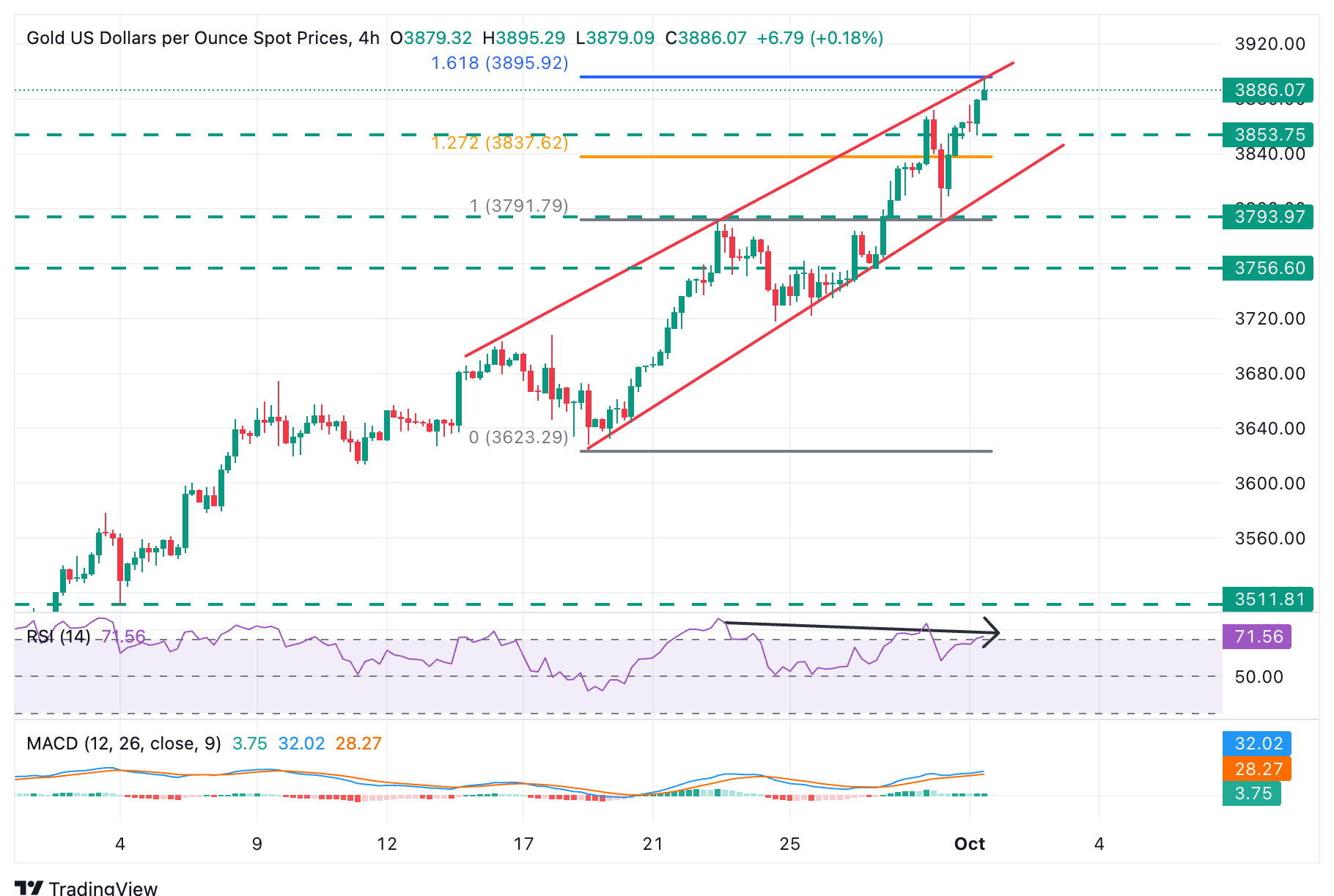Gold Price Forecast: XAU/USD, at fresh highs near $3,900 on risk-off markets
- Gold bounced up to hit fresh record highs a few pips shy of the $3,900 level.
- Uninspiring US labour figures and the US government shutdown have hurt the USD, boosting safe-havens like Gold.
- Technical indicators show a bearish divergence on the 4-hour charts.
Risk-averse markets, following the closure of the US federal government, are boosting demand for precious metals on Wednesday. Gold (XAU/USD) bounced from lows right below $3,800 and has reached fresh all-time highs, above $3,890, during the European trading session.
Bullion has been drawing support from the vulnerable US Dollar as the closure of the US federal government and uninspiring US Data –Tuesday’s rise on Job openings was offset by a lower hiring rate– has underpinned hopes of further Fed rate cuts this year.
Technical indicators show a bearish divergence

While fundamental drivers continue to buoy Gold higher, the technical picture shows a bearish divergence on the 4-hour chart’s RSI, a figure that often signals a downside reversal.
To the upside, the 161.8% Fibonacci extension of the September 19-23 bull run, at $3,895, is holding bulls at the moment. Further up, bulls might be attracted by the $4,000 psychological level. The 261.8% Fibonacci extension of the previously mentioned bullish cycle is at $4,064.
Gold FAQs
Gold has played a key role in human’s history as it has been widely used as a store of value and medium of exchange. Currently, apart from its shine and usage for jewelry, the precious metal is widely seen as a safe-haven asset, meaning that it is considered a good investment during turbulent times. Gold is also widely seen as a hedge against inflation and against depreciating currencies as it doesn’t rely on any specific issuer or government.
Central banks are the biggest Gold holders. In their aim to support their currencies in turbulent times, central banks tend to diversify their reserves and buy Gold to improve the perceived strength of the economy and the currency. High Gold reserves can be a source of trust for a country’s solvency. Central banks added 1,136 tonnes of Gold worth around $70 billion to their reserves in 2022, according to data from the World Gold Council. This is the highest yearly purchase since records began. Central banks from emerging economies such as China, India and Turkey are quickly increasing their Gold reserves.
Gold has an inverse correlation with the US Dollar and US Treasuries, which are both major reserve and safe-haven assets. When the Dollar depreciates, Gold tends to rise, enabling investors and central banks to diversify their assets in turbulent times. Gold is also inversely correlated with risk assets. A rally in the stock market tends to weaken Gold price, while sell-offs in riskier markets tend to favor the precious metal.
The price can move due to a wide range of factors. Geopolitical instability or fears of a deep recession can quickly make Gold price escalate due to its safe-haven status. As a yield-less asset, Gold tends to rise with lower interest rates, while higher cost of money usually weighs down on the yellow metal. Still, most moves depend on how the US Dollar (USD) behaves as the asset is priced in dollars (XAU/USD). A strong Dollar tends to keep the price of Gold controlled, whereas a weaker Dollar is likely to push Gold prices up.

